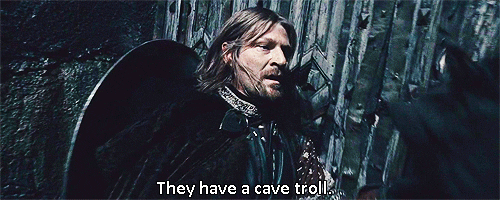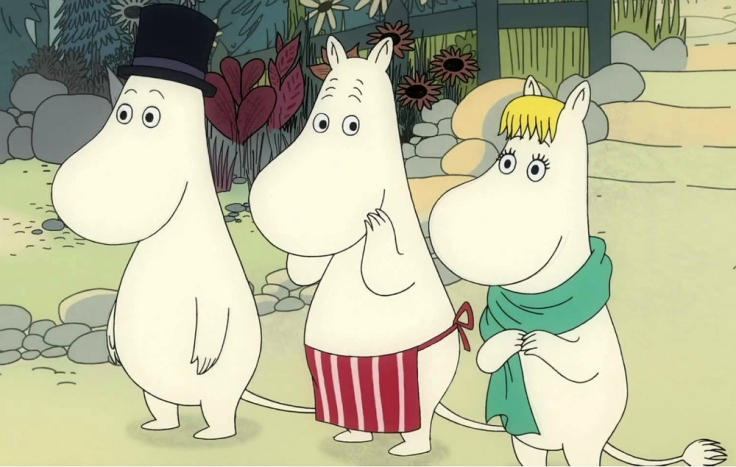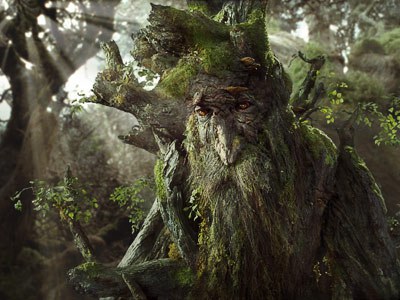The fantasy genre is rich with imagined monsters, creatures, and beasts. Creations which haunt our dreams and make us walk that little bit faster after dark. This article will first look at a few of the more common monsters, and then will explore the methods to assist you in becoming the next Dr. Frankenstein.
Types of Monsters
Demons

Demons are probably one of the most common types of monster I come across in fantasy. They feature in James Barclay’s Noonshade, quite heavily in Raymond Feist’s Riftwar Saga. H.P. Lovecraft had his famous demon, Cthulhu, and Tolkien his demon, Balrog. But what is a demon exactly? Let’s have a look at some of the most common tropes:
- They are inherently associated with evil. Their desire is to break into our realm from whatever plane they come from and wreak havoc on life as we know it.
- In terms of appearance, the classic demon is somewhat goat-like, with horns like a ram, cloven hooves, red skin. Some have wings and their size can vary from mountainous to minuscule.
- Contemporary demons sometimes take human form, ranging from grotesque old men to beautiful, seductive women—you won’t believe how many pictures of sexy demons there are on the internet.
- In most instances, they’re summoned by some beardy lunatic and the good guys have to somehow banish it to whence it came.
Trolls
Trolls have been around a while. My earliest recollection of a troll was in the kid’s story Three Billy Goats Gruff. The troll in that tale was depicted as a grotesque brute that ate anybody foolish enough to cross the bridge he lived under. I avoided bridges for years.
One of the most iconic scenes in the Lord of the Rings series, for me anyway, is when the cave troll bursts through the doors in Moria and bellows a roar that stole my breath.

But trolls come in different shapes and sizes. The Moomins were trolls, hardly the kind to rip your arms from your body.

Here are a few common tropes:
- The word ‘trolls’ is an old Norse word which means fiend, demon or giant. You can kind of see where they get their reputation from.
- Trolls are diverse, ranging from massive, bloodthirsty monsters to cute and friendly gnomes.
- The big ones like to smash things with tree trunks or giant weapons forged to destroy.
- Can withstand a boatload of arrows, unless you shoot it in the skull while standing on its shoulders.
- Tend to be pretty dim with vulnerabilities to certain things. For example, in The Hobbit, the three trolls turned to stone when touched by daylight. In other depictions, trolls are vulnerable to fire. However, other versions portray them as crafty, cunning creatures.
- They tend to live in isolation, either in forests or caves.
Ents

I know ents don’t feature broadly across the fantasy genre, but I bloody love them. The last march of the ents in The Two Towers still gives me the chills.
I include ents as an example: that you can make a monster out of anything. There’s something terrifying about a change in the behaviour of the familiar. A tree that can crush people? Harmless to armless.
And it shows that you can create nice monsters and not evil ones. The ents are maybe one of the most likeable creatures in the entire fantasy genre, and I’d say that’s because of the rich history Tolkien gave them. We gain an understanding of their character and perspective from the likes of the way they talk, their behaviour and history. I still chuckle when they talk about losing the ent wives. It’s a wonderful example of the lengths you can go to when crafting your monsters.
Making Monsters
What should we consider when making a monster? These are some of the tips given by bestselling horror writer, Philip Athans:
- It should be different and scary;
- Something we’ve never seen before;
- Dangerous, threatening, and violent. Think of those scenes of pure carnage that makes you realise how much blood is in a human body. Or bodies with grotesque and inexplicable injuries. Think of your most sensitive parts of the body and torment them with your pen. A lot of people are scared of injuring their eyes.
- The monster disrupts the predator/prey relationship. No longer are humans at the top of the food chain.
- It should be unpredictable. Humans can sometimes gauge what can happen next. Take that away. Philip Athans, said:“the less your characters know about what a monster can and can’t do, the better. It’s this unpredictability that will keep your readers on the edge of their seats, playing into the power of the imagination.“
- Perspective. Is your monster a creation of pure evil, hell bent on destruction? Is it a force for good, striving to save others? Is it misunderstood, wanting to fit in, to be like humans? Is it conflicted in some way? Playing with the perspectives of your monsters can give you that unique edge. A cave troll afraid of fighting?
Consider Monsters of Mythology
So what can we do to create our own monsters? If you’re looking for ideas a good starting point is mythology. This was a massive influence for Tolkien. We see the influences in the Balrog, the Watcher in the Water outside Moria, Shelob and of course, cave trolls. Sauron too has something demonic about him.

Norse mythology is rich with monsters. The giants, also known as the ‘devourers’, are spirits of death and darkness. A number of devourers took the form of creatures. There’s Fenrir the giant wolf who slew the god Odin. Nidhogg the serpent that gnaws at the roots of the world-tree. Sleipnir, Odin’s eight-legged horse, and Jormungand, a sea serpent which surrounds the land of humanity.
Greek mythology is a whole new level of monsters, from the minotaur, cyclops, and Medusa, to Scylla— a multi-headed sea serpent—and the three-headed dog and guardian of the underworld, Cerberus.
In exploring these myths it gives you a basis to create your own monster. You can experiment with features or traits, piece together the anatomy of your beast, and adapt them to your world and setting.
The Fear Factor
Another method you can adopt is exploring fear. Do you have any phobias of creatures? A fear of spiders is a common one. Some people loathe how they look with their bristly bodies and fangs. For others, myself included, it’s the swiftness of their movement. A good thing to do is jot down a few of the things that creep you out the most. Put those features together and intensify them.

In a short story I’m working on at the moment I wanted to include some type of arachnid but was conscious of going for the obvious. I played around with the features, thinking of how it moved and the sounds those movements could make. I morphed the image of a spider into something more centipedal with a cavernous, circular mouth filled with rows of teeth like serrated guillotines. You never know, in conjuring something terrifying you may overcome your fears!
Don’t just stop at your own fears. What are other people afraid of? Google phobias. Here are the top five phobias of all time, according to this article anyway:
- Cynophobia – the fear of dogs;
- Agoraphobia – the fear of open spaces;
- Acrophobia – the fear of heights;
- Ophidiophobia – the fear of snakes
- Arachnophobia – the fear of spiders.
If you can make a monster using a fear of heights I commend you. Maybe some kind of creature that throws you really high into the air?
Using Allegories
One thing to help come up with ideas for your monster is allegories—what does this monster represent or mean, either morally or politically. For instance, Bram Stoker’s Dracula is said to represent a fear of foreigners and disease which existed at the time of its publication.
Thank you for reading, and thank you to the wonderful folks at Writing Bad for letting me loose. The site and Facebook group are fantastic, full of people willing to help each other out. It’s a hard thing to find these days. Continue to support it!
~Richie Billing
If you like this kind of article, Fridays on my blog are dedicated to all things fantasy. You can read more on my website, or find me spouting nonsense on Twitter and Facebook too.






Very informative. Absolutely loved the Moomins when I was a kid!
LikeLiked by 2 people
Reblogged this on Richie Billing and commented:
I’m delighted to share with you a guest blog post I wrote for http://www.writingbad.org. This is part of my Fantasy Friday series (though please forgive it going live on Monday!).
It’s all to do with the monsters found in fantasy, a genre rich with imagined creatures and beasts. Creations which haunt our dreams and make us walk that little bit faster after dark.
This article first looks at a few of the more common monsters and then will explore some methods to assist you in becoming the next Dr. Frankenstein.
LikeLiked by 2 people
A thorough commentary, even knowing there’s so much more to be said about fantasy creatures and monsters. 😀
LikeLiked by 1 person
Hiya! Absolutely enthralled by this. I’ve read various pieces of analysis about Dracula too, and they’ve undoubtedly given me a new respect for the art of fear. I think that the quote about writing monsters that are new, and never seen before is interesting (and evidently effective with contemporary readers and Dracula – for whom foreigners were part of this ‘unknown’), and definitely helps to leave an impression. However, personally, I find that known monsters are much more fearsome. Childhood monsters such as the ‘Boogie Monster’ or ‘The Monster Under the Bed’ can really be terrifying, just because they warp with your sense of reality. Anyway, great read! I hope that you’ll check out my work sometime – I’d be delighted to have some feedback too.
LikeLiked by 1 person
Very interesting, but did you define tropes? I missed it. I’m following
LikeLiked by 1 person
Great post, really interesting. I’ve honestly not read any articles on monster creating (not like the typical world building posts) so this was a great find!
LikeLiked by 1 person
Reblogged this on Author JB McGraw and commented:
Amazing article from over at Writing Bad that gives great advice for brainstorming monsters in your writing. If you’re creative, or if you want to be, go check out their site! Super helpful information and great admins.
LikeLiked by 1 person